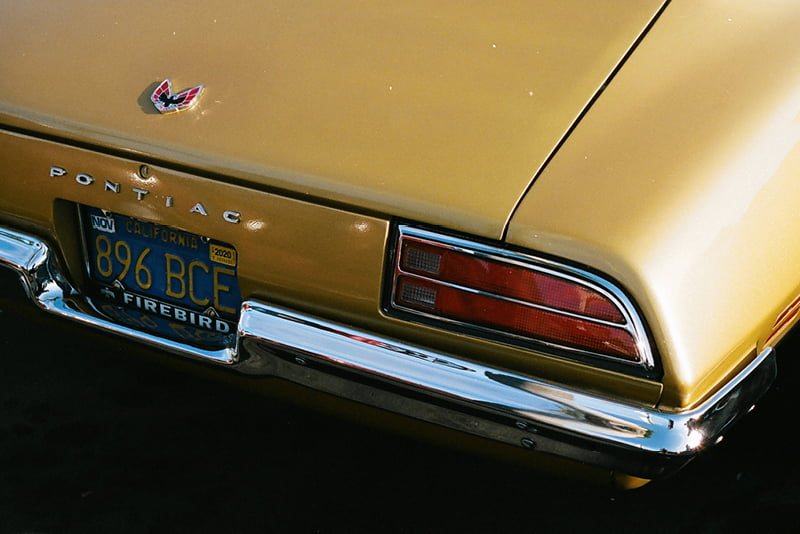According to the New York Times, more than any other General Motors brand, Pontiac stood for performance, speed and sex appeal – so where did it all go wrong?
With the humblest of beginnings, the brand as we know it was born in Pontiac, Michigan in 1893. Originally branded as the Pontiac Buggy Company, founder Edward Murphy certainly knew which way the tide was turning, and began producing automobiles in 1907 under the name Oakland Motor Car Company. Oddly enough, the following year another former buggy company executive, founded a motor vehicle company. That man was William Durant, and the company operation was the beginnings of automotive titan, General Motors.
General Motors soon established itself as a holding company not to be trifled with, and had already amassed an array of vehicle manufacturers such as Buick, Oldsmobile and Cadillac. After Murphy’s sudden death in 1908, it didn’t take long for General Motors to place Pontiac in its sights, and acquired the company in full by 1909.
General Motors Unleashes Pontiac’s Potential
The very first Pontiac model made its debut as part of the Oakland line at the New York Auto Show in 1926. The five-passenger, six-cylinder car proved such a sensation that 76,742 of the cars were sold that year at $825 a pop. The high quality six-cylinder engine cars were purposefully designed and marketed to sell for the price of a four. The strategy worked, and as a result of Pontiac’s rising popularity versus Oakland’s declining sales, Pontiac became the only companion marque to survive its parent, with Oakland ceasing production in 1932.
In 1935, Pontiac started adding chrome trim straight down the centre of its hoods and trunks. In turn, the distinctive embellishment became known as the “Silver Streak” and lasted as a trademark Pontiac “look” for twenty years. However, the brand had some difficulties finding its feet and niche in what was a very competitive marketplace.
In the United States, the big wigs at General Motors marketed the Pontiac division as the affordable and sporty division of the holding company. Pontiac continuously outperformed Oldsmobile and Buick for most of the 1950s, and in Canada specifically, the automobile line sold well as a wise economic choice without sacrificing engine power. However, it’s no secret that the 1950s era Pontiac Star Chief had an undeniable problem in keeping up with the Tri-Five Chevrolet Bel Air from the same time period in units sold – and something had to change.
In 1955, completely new bodies and chassis were introduced, along with a new 173 hp (129 kW; 175 PS) overhead-valve V8 engine. In order to stay relevant, Pontiac underwent a complete branding overhaul, with one of the first steps being the removal of the famous trademark “silver streaks” from the hood and deck lid in the 1957 models. Although prominent for their range of sedans, by the time the 1960’s had rolled around, Pontiac was suddenly sexy. The release of the 1964 GTO, or America’s first muscle car, rapidly put Pontiac back on the map thanks to their ability to pack huge engines into smaller bodies. This translated into fast, slick and powerful vehicles unlike any other on the market, and were followed by the Firebird and Trans Am models.
Needless to say, Pontiac motor vehicles became a figurehead of American pop culture. Pontiacs were featured in such movies as 1977’s “Smokey and the Bandit,” in which actor Burt Reynolds drove a black Pontiac Trans Am. Later in the 1980’s, David Hasselhoff’s crime fighting hit TV show “Knight Rider” even starred a Pontiac Trans Am as KITT, a talking car with artificial intelligence.
However, by the time the mid 1980’s arrived, Pontiac had already hit its peak. As the United States moved away from the muscle car era, the brand struggled to reinvent itself. Paired with changing government regulations, cost saving production efforts and the introduction of vehicles that didn’t quite pack the same punch, Pontiac’s sales continued to decline for the better part of two decades. Finally, in 2008, General Motors – which had been the world’s top-selling automaker since the early 1930s – lost the number one spot to Japan-based Toyota.
That same year, and with sales slumping in the midst of a global recession, General Motors was forced to ask the federal government for a multi-billion-dollar loan to remain afloat. On April 27, 2009, as part of its reorganization plan, General Motors announced its intentions to phase out the Pontiac brand by 2010. A little over a month later, General Motors filed for Chapter 11 bankruptcy protection, becoming the fourth-largest bankruptcy in American history, and the very last Pontiac, a white 2010 G6 four door sedan, was built at the Orion Township Assembly Line in January 2010, signalling the end of an era.

